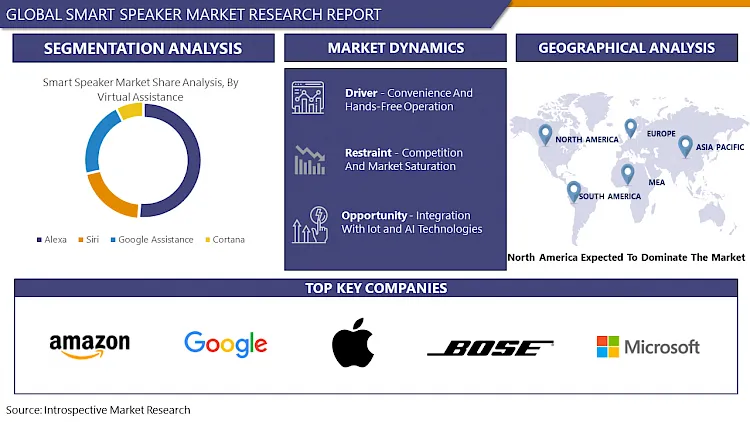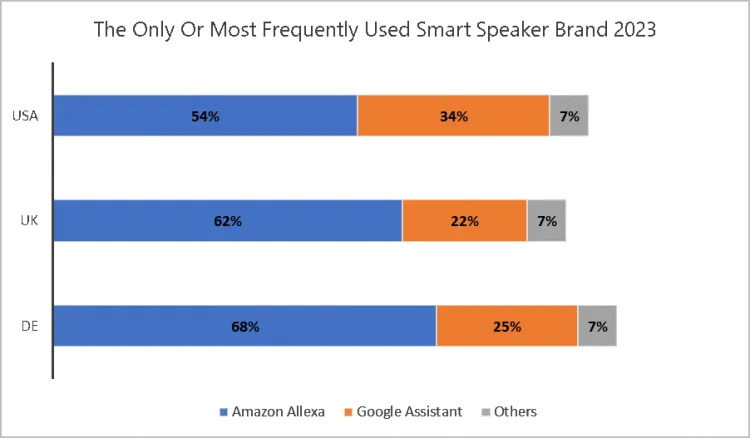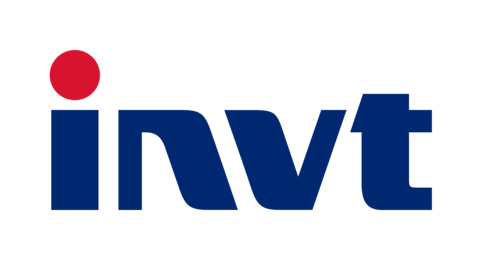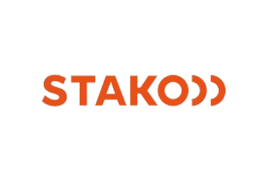Smart Speaker Market Synopsis
The global Smart Speaker Market was valued at USD 8.31 billion in 2023 and is likely to reach USD 52.08 billion by 2032, increasing at a CAGR of 22.62% from 2024 to 2032.
The area of the consumer electronics business passionate to voice-activated speakers with virtual assistant and artificial intelligence (AI) capabilities is known as the "smart speaker." These speakers can respond to voice commands with information and can carry out a variety of tasks. Wi-Fi is usually used by smart speakers to connect to the internet.
- They can communicate with users by using voice commands to do things like play music, make reminders, operate smart home appliances, respond to inquiries, and provide traffic, weather, and news updates.
- The integration of smart speakers into smart homes is a developing trend, as these devices become an increasingly significant component of the connected home. Smart speakers may be used to control other smart home devices like lighting, thermostats, and security systems using simple voice commands.
- Customers may control their home environment seamlessly with smart speakers, eliminating the need for additional applications or remote controllers. Integrating them into smart homes enables automation and voice-activated chores, so altering the home experience. However, content creators and technology businesses must examine the ethical consequences of creating content for smart speakers. As these gadgets grow more integrated into daily life, it is critical to consider the ethical implications of their creation and use.
- Privacy, data protection, and the right use of personal information are some of the most important and ethical considerations while generating content for smart speakers.
- As technology advances, we should expect to see many more combinations of smart speakers and other smart home gadgets.

Smart Speaker Market Trend Analysis
Convenience and Hands-Free Operation
- Smart speakers allow you to play practically any type of music at any time with a simple voice command. You can also listen to audiobooks, play games, and have Alexa or Google tell you a joke.
- When your smart speaker is connected to other smart home devices, you can control your TV, lights and thermostat with just your voice.
- If you’re over 50 and live alone, you could be one of the more than 8 million people who are missing out on the health benefits of social connection. In addition to offering convenience, smart speakers are a terrific way to stay healthy and connected while on your own.
Opportunities
Integration With Iot and AI Technologies
- AI and machine learning are making content production for smart speakers more efficient and effective, and this trend is expected to continue in the future. By harnessing these technologies, content makers may provide consumers with interesting and dynamic experiences that were previously impossible.
- The smart speaker is a voice-controlled device that combines the functionality of a standard speaker with the capabilities of a virtual assistant. It is much more than simply an audio output. Smart speakers use natural language processing and artificial intelligence (AI) technology to comprehend and reply to queries, conduct tasks, and entertain.
- We may access information and manage different parts of your digital life by just voicing instructions or asking a smart speaker. As a result, and as technology advances, smart speakers are rapidly becoming essential centres for job management and automation in modern homes.
Challenges
Competition And Market Saturation
- In the highly competitive smart speaker market, there are many manufacturers vying for market share. The market is largely controlled by a few big players with their own lines of smart speakers, such as Amazon, Google and Apple, as well as other tech giants. The industry is also becoming more competitive as more startups and smaller companies enter the market.
- Manufacturers are constantly coming up with new models with different features, looks and price points to meet the diverse needs of their customers. As they are trying to stand out from the crowd and attract new customers, the competition for market share becomes fiercer.
- As the number of smart speaker models increases, so does the price competition. Some manufacturers may run price wars or offer discounts and promotions to increase their market share. This will lead to a decrease in profit margin shares and saturation, resulting in price pressure.
Market Segment Analysis:
Market Segmented based on Virtual assistance, by Component, by Distribution Channel and region.
By Virtual Assistance, Alexa Expected to Dominate the Market During the Forecast Period
- The virtual assistant Alexa was created by Amazon and is a part of the Echo smart speaker series. Playing music, sending reminders, controlling smart home devices, providing weather information, answering questions and more are just a few of the many functions and features that Alexa offers. Amazon's massive ecosystem built around Alexa allows third-party developers to create skills—voice-activated apps—that enhance Alexa's capabilities.
- Amazon's early entry into the smart speaker industry and antagonistic marketing strategies have contributed to some of Alexa's dominance. Around half of those surveyed in Germany and the U.S. use a smart speaker with screen. Amazon’s Alexa is no. 1 – in all three countries.

By Distribution Channel, The Online Channel Held the Largest Share
Distribution Channel, there are two segmentations based on distribution channels online and offline.
- A number of e-commerce sites and online retail platforms, such as Amazon, Google Yes, the smart speaker market has seen substantial expansion in recent years. With the advancement of voice recognition technology and the increasing integration of virtual assistants such as Amazon's Alexa, Google Assistant, and Apple's Siri, smart speakers have evolved from mere music players to central hubs for controlling smart home devices, accessing information, and even making purchases.
- The ease they provide has helped them gain popularity and expand the industry.
- Customers can find a wide range of smart speaker models and brands at competitive prices on e-commerce platforms such as Amazon, Best Buy, Walmart, and others.
Market Regional Insights:
North America is Expected to Dominate the Market Over the Forecast Period
- Smart speaker technology was initially embraced in North America, namely the United States. When Amazon and Google first released their smart speaker devices in the United States, they earned a considerable market share and boosted early adoption.
- The US market is appealing to smart speaker manufacturers because of its huge and technologically savvy client base. High levels of disposable income and consumer spending contribute to the market's growth and dominance. Apple, Google, and Amazon have an advantage over smaller players in the smart speaker sector since their headquarters are in North America. These firms' extensive resources, clever marketing methods, and well-known brands allow them to drive adoption.
Market Top Key Players:
The top key companies in the Smart Speaker Market are:
- Amazon (United States)
- Google (United States)
- Apple (United States)
- Sonos (United States)
- Bose (United States)
- Harman International Industries (United States)
- Microsoft (United States)
- Baidu (China)
- Xiaomi (China)
- Tencent (China)
- Sony (Japan)
- Lg Electronics (South Korea)
- Samsung Electronics (South Korea)
- Alibaba Group (China)
- Jbl (United States)
- Ue Boom (United States)
- Lenovo (China)
- Yamaha (Japan)
- Libratone (Denmark)
- Bowers & Wilkins (United Kingdom)
- Anker Innovations (China)
- Marshall Headphones (United Kingdom)
- Ultimate Ears (United States)
- Klipsch (United States)
- Polk Audio (United States) and other active players.
Key Industry Developments in the Market:
- In Aug 2023, Amazon and Google plan to let their voice assistants team up on one device, The first products on the market to do so are the new JBL Authentic speakers from Harman, which now have both Google Assistant and Alexa.
- In Jan 2023, Apple plans a new push into the smart home market, with an improved Apple TV set-top box with a built-in camera and a slim, lightweight smart display under development, Apple is primed to revolutionize smart homes.
|
Global Smart Speaker Market |
|||
|
Base Year: |
2023 |
Forecast Period: |
2024-2032 |
|
Historical Data: |
2017-2023 |
Market Size in 2023: |
USD 8.31 billion |
|
Forecast Period 2024-32 CAGR: |
22.62% |
Market Size in 2032: |
USD 52.08 billion |
|
Segments Covered: |
By Virtual Assistance |
|
|
|
By Component |
|
||
|
By Distribution Channel |
Shops Electronics Stores Retailers etc |
||
|
By Region |
|
||
|
Key Market Drivers: |
|
||
|
Key Market Restraints: |
|
||
|
Key Opportunities: |
|
||
|
Companies Covered in the report: |
Apple, Sonos, Bose, Harman International Industries, Microsoft, And Other Major Players |
||
- INTRODUCTION
- RESEARCH OBJECTIVES
- RESEARCH METHODOLOGY
- RESEARCH PROCESS
- SCOPE AND COVERAGE
- Market Definition
- Key Questions Answered
- MARKET SEGMENTATION
- EXECUTIVE SUMMARY
- MARKET OVERVIEW
- GROWTH OPPORTUNITIES BY SEGMENT
- MARKET LANDSCAPE
- PORTER’S FIVE FORCES ANALYSIS
- Bargaining Power Of Supplier
- Threat Of New Entrants
- Threat Of Substitutes
- Competitive Rivalry
- Bargaining Power Among Buyers
- INDUSTRY VALUE CHAIN ANALYSIS
- MARKET DYNAMICS
- Drivers
- Restraints
- Opportunities
- Challenges
- MARKET TREND ANALYSIS
- REGULATORY LANDSCAPE
- PESTLE ANALYSIS
- PRICE TREND ANALYSIS
- PATENT ANALYSIS
- TECHNOLOGY EVALUATION
- MARKET IMPACT OF THE RUSSIA-UKRAINE WAR
- Geopolitical Market Disruptions
- Supply Chain Disruptions
- Instability in Emerging Markets
- ECOSYSTEM
- PORTER’S FIVE FORCES ANALYSIS
- SMART SPEAKER MARKET BY VIRTUAL ASSISTANCE (2017-2032)
- SMART SPEAKER MARKET SNAPSHOT AND GROWTH ENGINE
- MARKET OVERVIEW
- ALEXA
- Introduction And Market Overview
- Historic And Forecasted Market Size in Value (2017-2032F)
- Historic And Forecasted Market Size in Volume (2017-2032F)
- Key Market Trends, Growth Factors And Opportunities
- Geographic Segmentation Analysis
- SIRI
- GOOGLE ASSISTANT
- CORTANA
- SMART SPEAKER MARKET BY COMPONENT (2017-2032)
- SMART SPEAKER MARKET SNAPSHOT AND GROWTH ENGINE
- MARKET OVERVIEW
- HARDWARE
- Introduction And Market Overview
- Historic And Forecasted Market Size in Value (2017-2032F)
- Historic And Forecasted Market Size in Volume (2017-2032F)
- Key Market Trends, Growth Factors And Opportunities
- Geographic Segmentation Analysis
- SOFTWARE
- SMART SPEAKER MARKET BY DISTRIBUTION CHANNEL (2017-2032)
- SMART SPEAKER MARKET SNAPSHOT AND GROWTH ENGINE
- MARKET OVERVIEW
- ONLINE RETAIL PLATFORMS
- Introduction And Market Overview
- Historic And Forecasted Market Size in Value (2017-2032F)
- Historic And Forecasted Market Size in Volume (2017-2032F)
- Key Market Trends, Growth Factors And Opportunities
- Geographic Segmentation Analysis
- OFFLINE PLATFORMS
- COMPANY PROFILES AND COMPETITIVE ANALYSIS
- COMPETITIVE LANDSCAPE
- Competitive Benchmarking
- SMART SPEAKER Market Share By Manufacturer (2023)
- Industry BCG Matrix
- Heat Map Analysis
- Mergers & Acquisitions
- AMAZON (UNITED STATES)
- Company Overview
- Key Executives
- Company Snapshot
- Role of the Company in the Market
- Sustainability and Social Responsibility
- Operating Business Segments
- Product Portfolio
- Business Performance (Production Volume, Sales Volume, Sales Margin, Production Capacity, Capacity Utilization Rate)
- Key Strategic Moves And Recent Developments
- SWOT Analysis
- GOOGLE (UNITED STATES)
- APPLE (UNITED STATES)
- SONOS (UNITED STATES)
- BOSE (UNITED STATES)
- HARMAN INTERNATIONAL INDUSTRIES (UNITED STATES)
- MICROSOFT (UNITED STATES)
- BAIDU (CHINA)
- XIAOMI (CHINA)
- TENCENT (CHINA)
- SONY (JAPAN)
- LG ELECTRONICS (SOUTH KOREA)
- SAMSUNG ELECTRONICS (SOUTH KOREA)
- ALIBABA GROUP (CHINA)
- JBL (UNITED STATES)
- UE BOOM (UNITED STATES)
- LENOVO (CHINA)
- YAMAHA (JAPAN)
- LIBRATONE (DENMARK)
- BOWERS & WILKINS (UNITED KINGDOM)
- ANKER INNOVATIONS (CHINA)
- MARSHALL HEADPHONES (UNITED KINGDOM)
- ULTIMATE EARS (UNITED STATES)
- KLIPSCH (UNITED STATES)
- POLK AUDIO (UNITED STATES)
- COMPETITIVE LANDSCAPE
- GLOBAL SMART SPEAKER MARKET BY REGION
- OVERVIEW
- NORTH AMERICA
- Key Market Trends, Growth Factors And Opportunities
- Key Manufacturers
- Historic And Forecasted Market Size By VIRTUAL ASSISTANCE
- Historic And Forecasted Market Size By COMPONENT
- Historic And Forecasted Market Size By DISTRIBUTION CHANNEL
- Historic And Forecasted Market Size By Country
- USA
- Canada
- Mexico
- EASTERN EUROPE
- Key Market Trends, Growth Factors And Opportunities
- Key Manufacturers
- Historic And Forecasted Market Size By Segments
- Historic And Forecasted Market Size By Country
- Russia
- Bulgaria
- The Czech Republic
- Hungary
- Poland
- Romania
- Rest Of Eastern Europe
- WESTERN EUROPE
- Key Market Trends, Growth Factors And Opportunities
- Key Manufacturers
- Historic And Forecasted Market Size By Segments
- Historic And Forecasted Market Size By Country
- Germany
- United Kingdom
- France
- The Netherlands
- Italy
- Spain
- Rest Of Western Europe
- ASIA PACIFIC
- Key Market Trends, Growth Factors And Opportunities
- Key Manufacturers
- Historic And Forecasted Market Size By Segments
- Historic And Forecasted Market Size By Country
- China
- India
- Japan
- South Korea
- Malaysia
- Thailand
- Vietnam
- The Philippines
- Australia
- New-Zealand
- Rest Of APAC
- MIDDLE EAST & AFRICA
- Key Market Trends, Growth Factors And Opportunities
- Key Manufacturers
- Historic And Forecasted Market Size By Segments
- Historic And Forecasted Market Size By Country
- Turkey
- Bahrain
- Kuwait
- Saudi Arabia
- Qatar
- UAE
- Israel
- South Africa
- SOUTH AMERICA
- Key Market Trends, Growth Factors And Opportunities
- Key Manufacturers
- Historic And Forecasted Market Size By Segments
- Historic And Forecasted Market Size By Country
- Brazil
- Argentina
- Rest of South America
- INVESTMENT ANALYSIS
- ANALYST VIEWPOINT AND CONCLUSION
- Recommendations and Concluding Analysis
- Potential Market Strategies
|
Global Smart Speaker Market |
|||
|
Base Year: |
2023 |
Forecast Period: |
2024-2032 |
|
Historical Data: |
2017-2023 |
Market Size in 2023: |
USD 8.31 billion |
|
Forecast Period 2024-32 CAGR: |
22.62% |
Market Size in 2032: |
USD 52.08 billion |
|
Segments Covered: |
By Virtual Assistance |
|
|
|
By Component |
|
||
|
By Distribution Channel |
Shops Electronics Stores Retailers etc |
||
|
By Region |
|
||
|
Key Market Drivers: |
|
||
|
Key Market Restraints: |
|
||
|
Key Opportunities: |
|
||
|
Companies Covered in the report: |
Apple, Sonos, Bose, Harman International Industries, Microsoft, And Other Major Players |
||
Frequently Asked Questions :
The forecast period in the Smart Speaker Market research report is 2024-2032.
Amazon (United States),Google (United States),Apple (United States),Sonos (United States),Bose (United States),Harman International Industries (United States),Microsoft (United States),Baidu (China),Xiaomi (China),Tencent (China),Sony (Japan),Lg Electronics (South Korea),Samsung Electronics (South Korea),Alibaba Group (China),Jbl (United States),Ue Boom (United States),Lenovo (China),Yamaha (Japan),Libratone (Denmark),Bowers & Wilkins (United Kingdom),Anker Innovations (China),Marshall Headphones (United Kingdom),Ultimate Ears (United States),Klipsch (United States),Polk Audio (United States) and other active players.
The Smart Speaker Market is segmented into Virtual Assistance, Distribution Channels, Components, and Regions. By Virtual Assistance (Alexa, Siri, Google Assistant, Cortana, and others), By Component (Hardware, Software), and By Distribution Channel (Online, Offline). By region, it is analyzed across North America (U.S.; Canada; Mexico), Eastern Europe (Bulgaria; The Czech Republic; Hungary; Poland; Romania; Rest of Eastern Europe), Western Europe (Germany; UK; France; Netherlands; Italy; Russia; Spain; Rest of Western Europe), Asia-Pacific (China; India; Japan; Southeast Asia, etc.), South America (Brazil; Argentina, etc.), Middle East & Africa (Saudi Arabia; South Africa, etc.).
The area of the consumer electronics business devoted to voice-activated speakers with virtual assistant and artificial intelligence (AI) capabilities is known as the "smart speaker market." These speakers can respond to voice commands with information and can carry out a variety of tasks.
The global Smart Speaker Market was valued at USD 8.31 billion in 2023 and is likely to reach USD 52.08 billion by 2032, increasing at a CAGR of 22.62% from 2024 to 2032.











